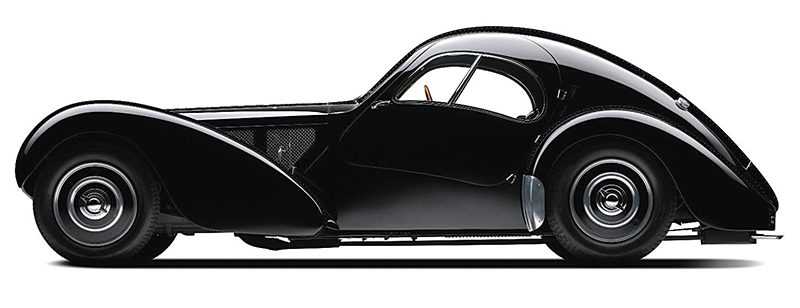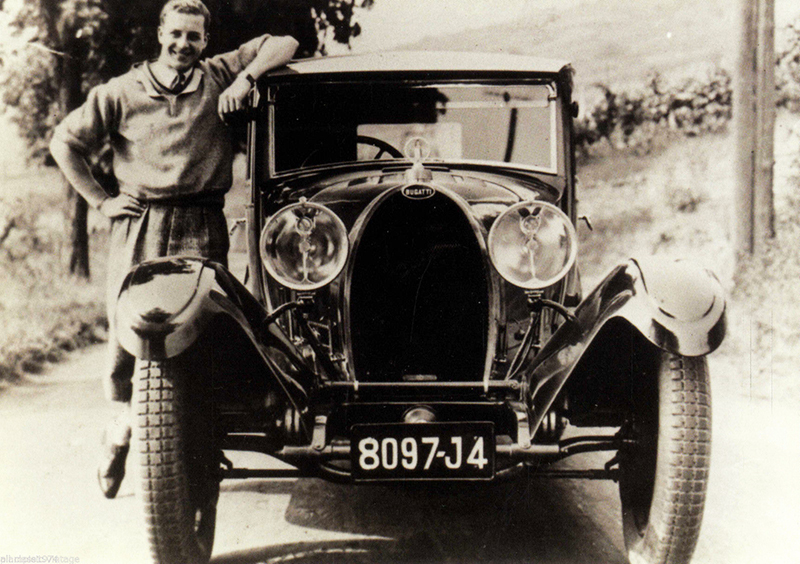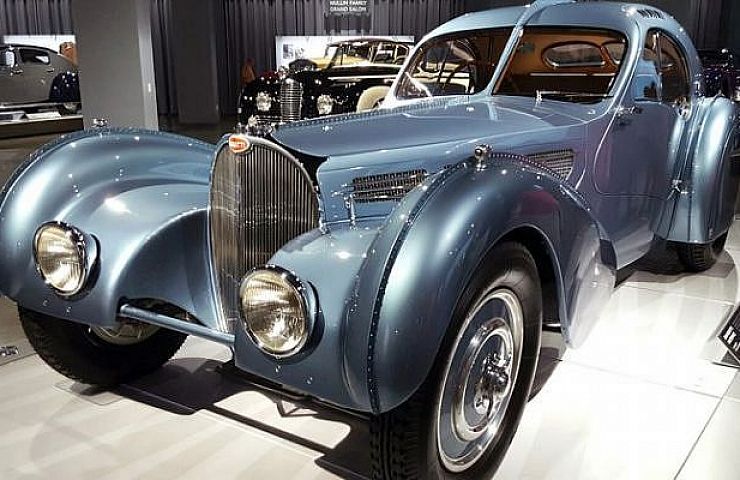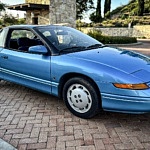The 2017 Arizona Concours d’Elegance will pay homage to iconic Bugatti car design by featuring one of the great automotive treasures of the Art Deco era: the 57SC Atlantic Coupe. The vehicle on display is one of four examples of the Atlantic ever produced. It will be displayed among 90 vintage vehicles at the Biltmore Resort in Phoenix on Jan. 15. The vehicle is on loan from the Millen Automotive Museum in Oxnard, Calif.
“At the height of the Art Deco movement, the refined look of certain machines elevated them to the level of museum objects,” says the Mullin museum in a press release. “In Jean Bugatti’s Atlantic, Picasso had met his match.”

A fine art print of the Bugatti Type 57SC Atlantic Coupe
The Bugatti marque was never part of the automotive mainstream, although its heritage dates back to the turn of the 20th century. Ettore Bugatti, the company’s founder, was the engineering genius behind sports cars that made history at LeMans as early as 1911. Jean, his eldest son, produced striking designs that included the Atlantic coupe—elevating the brand to superstar status among aficionados.
The Atlantic Coupe’s flowing aerodynamic lines reflect the Art Deco period, with such influences as: the architecture of Le Corbusier, Lalique’s gorgeous crystal hood ornaments, and Sonia Delaunay’s futuristic textiles.
A Giant in Automotive Design
Art Deco’s influence spread globally and with it, Jean Bugatti’s design genius. While most people credit Mercedes-Benz for developing the gullwing door, Jean Bugatti had designed butterfly doors for the Bugatti type 64 in 1939: 15 years prior to the Mercedes-Benz 300SL. It’s hard not to see a connection between the Atlantic Coupe’s aerodynamic profile and Raymond Loewy’s iconic Studebaker designs such as the 1953 Starliner hardtop and 10 years later, the Studebaker Avanti.

A post card of Jean Bugatti, with the Type 44, one of his early designs
Construction of the Atlantic Coupes was as revolutionary as their styling, with lightweight aluminum body panels riveted together in the manner of Bugatti’s 1935 show car: the Aérolithe Coupe. Power for the 57SC Atlantic came from a supercharged 3,257 cc inline-8 engine rated at 170 horsepower and capable of reaching 120 miles per hour.
Of the four 57SC Atlantics built, only two remain. The 1936 model headed to the Arizona Concours was first delivered to Lord Victor Rothschild in England in September of that year. It carries complete documentation including a history of its ownership, as well as a mechanical restoration by the Bugatti factory after the Second World War.
Jean Bugatti died a young man as the result of a freak automobile accident in 1939. His father, Ettore passed away eight years later, marking the end of an era. The company produced cars through the early 1950s, but ceased operations in 1952—finally selling its assets a decade later.
In the 1990s, an Italian entrepreneur revived the Bugatti name as a builder of unique sports cars. That business was taken over in 2000 by Volkswagen. Bugatti’s current models, the Chiron and Veyron, continue to embody the spirit of breathtaking designs like the 1936 57SC Atlantic Coupe.





